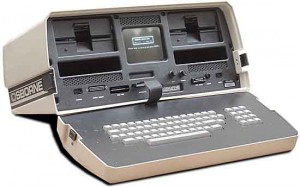The expected but still untimely passing of Steve Jobs has led to many observations about his national influence on design. But Apple was not the first American high-tech corporation to emphasize design. That distinction properly belongs to IBM. In 1956, Thomas J. Watson, the company’s founder, hired Eliot Noyes, an architect, to oversee IBM’s design initiatives. Thanks to Noyes, designers such as Charles Eames and Paul Rand (who was responsible for the IBM logo) came on board, and architects such as Marcel Breuer and Eero Saarinen were commissioned to design IBM buildings (Jobs commissioned Peter Bohlin to design the distinctive line of Apple stores as well as a headquarters for Pixar, and recently hired Norman Foster to design a new Apple headquarters). Noyes himself designed the classic Selectric typewriter, a beautiful piece of industrial design. In 1981, IBM introduced the IBM PC. It looks pretty tame now, but at the time it stood head and shoulders above the competition in terms of product design. My first computer was an Osborne, and I must admit I was as much taken by its design as by its low price (it was the first computer sold with bundled software). The Osborne had an IBM-style Selectric keyboard (still the gold standard, in spite of the iMac’s wireless Chiclets keyboard), weighed 25 pounds, and had a screen the size of a postcard. It’s the only computer I’ve ever had whose design I liked.


